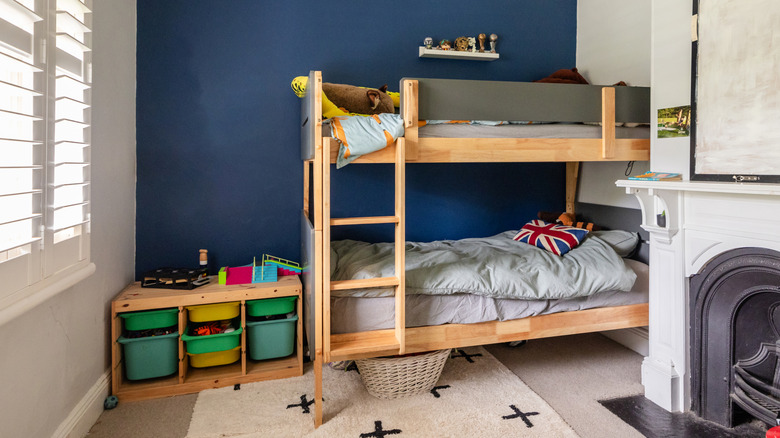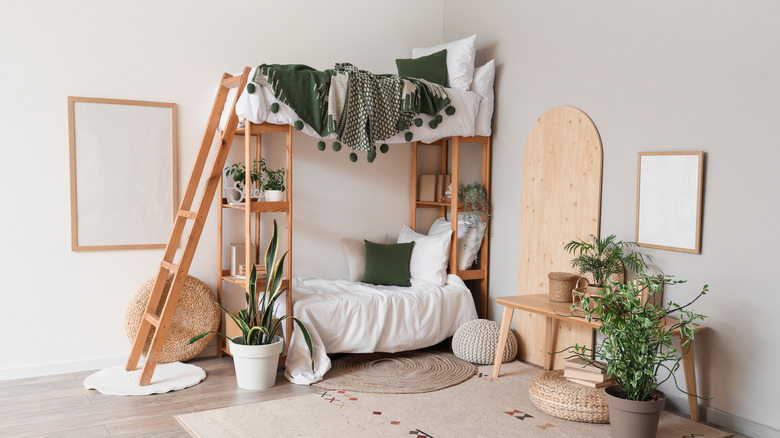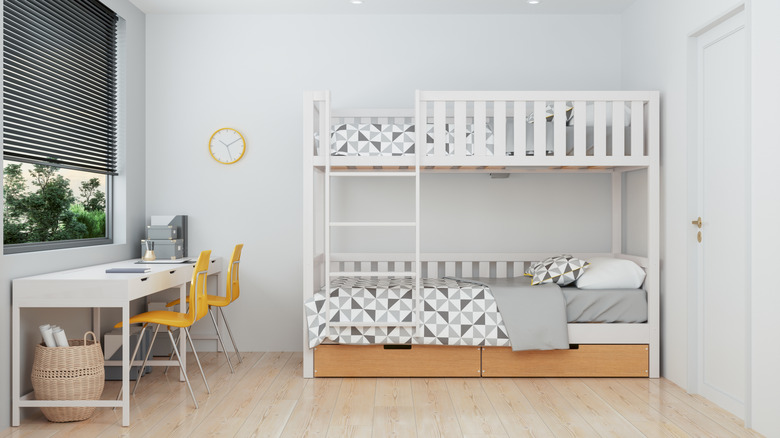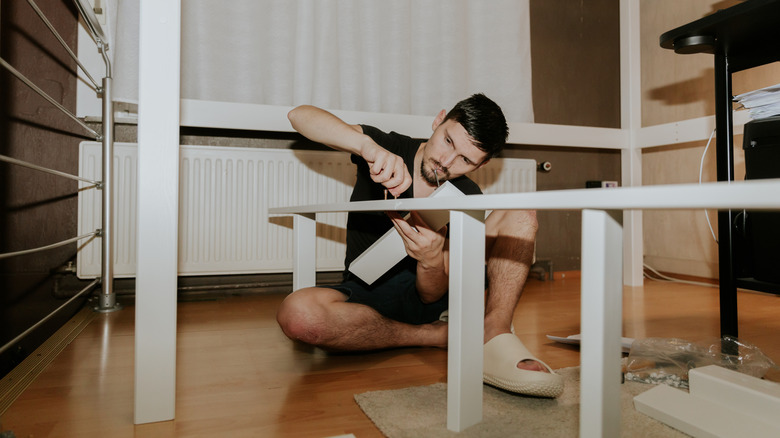Downsides To Bunk Beds That You Should Consider First
Bunk beds seem like the perfect solution when you're short on space and want to create a comfortable shared bedroom for kids. Siblings can share a single bedroom with more floor space available for play, or your child can have an extra bed available when they have friends sleep over. Whatever your reasoning for considering a bunk bed arrangement, it's also important to look at the downsides, including the potential safety concerns that come with sleeping so high off the floor. It can also be difficult to access the top bunk, and you'll have to work harder to set up bunk beds than you do a traditional bed.
When your child picks out a bed, they might focus on the looks or how cool it seems. What's cooler than bunk beds when you're a kid? However, safety and convenience are also major factors, especially for parents who are making the purchase. Beds for kids need to be age-appropriate and safe for your child's current developmental level. If you have young kids, they might not be old enough yet to sleep in the top bunk bed safely. The bunk bed option might still not work well for your older kids depending on the arrangement of the room and your preferences.
The height creates potential safety concerns
Safety is often a concern when you're choosing the best type of bed for a child's bedroom. Your child can roll out of any bed, but injuries are often more severe in a fall from the top bunk. Head and neck injuries are most common when someone falls off of the higher bed. The severity of the injuries could range from minor bumps and bruises to broken bones and head trauma. It's not just a risk when your child is sleeping. Kids who like to play in the top bed could fall off if they get too close to the edge or play roughly. Falls from the ladder as a child is entering or exiting the upper bunk can also cause injuries. Young children under the age of 6 are most likely to have a bunk-bed-related injury.
The standard recommendation is to wait until your child is at least 6 years old to use the top bunk. Guardrails are an essential part of bunk bed safety at an age. The U.S. Consumer Product Safety Commission requires manufacturers to include guardrails on both sides of the upper bunk with the rails being at least 5 inches above the mattress. You might also limit the top bunk to sleeping since playtime could turn dangerous quickly. Not only is there the risk of falling, but there is also a strangulation risk if any items are attached or tied to the railings.
Access is a challenge
Bunk beds aren't always easy to get into. Standard bunk bed ladders can be completely vertical and attach to the end of the bed or slightly angled. You'll need more space for an angled ladder, but it can be safer and easier for your child to climb. Straight ladders are space-saving options, but you'll still need to leave room at the end for ladder access. Staircases are also an option for some bunk beds. While this design takes up more room, the stairs usually feature built-in storage, so you can creatively add more storage space in your kids' room. Walking up stairs is often the safest option for young kids.
Accessibility isn't just an issue for your child. Someone has to change the bedding, and that will likely fall on you, especially when your kids are young. It can be challenging to reach the top bunk for sheet changes and making beds. It's also more challenging to cuddle or read books with your child when the bed is high.
The height of the bed also limits how much space the top bunk has. Bunk beds usually range between 54 and 74 inches tall — so the bed could reach over 6 feet tall. The average ceiling height is only 8 feet with bedrooms typically ranging from 8 to 10 feet tall. If you choose a tall bunk bed in a room with 8-foot ceilings, you might have only about 2 feet of clearance for the top bunk. Some people may feel claustrophobic being that close to the ceiling. There's also the risk of kids bumping their heads on the ceiling.
Assembly and moving is more challenging
If you plan to assemble the bunk bed yourself instead of hiring a professional, make sure you have a helper on standby as the job can be more difficult than a regular bed. Assembling the individual beds may be relatively straightforward, but you'll need at least one other person to lift the top bunk into place. It's essential that you connect the beds properly and assemble all of the parts securely to keep the bunk beds strong and secure. Bunk beds with stairs may be even more difficult to assemble due to the complexity of the stairs and integrated storage.
Moving any bed can be a challenge, whether you're packing up to move to a new home or you're simply rearranging your bedroom. Bunk beds make the work even more difficult due to their bulky design. You'll likely need to at least take the two beds apart before moving them, even if you're just shifting the bunk to the other side of the room. If you rearrange you child's room frequently or move to new homes often, bunk beds might be more of a hassle than you want to deal with.



